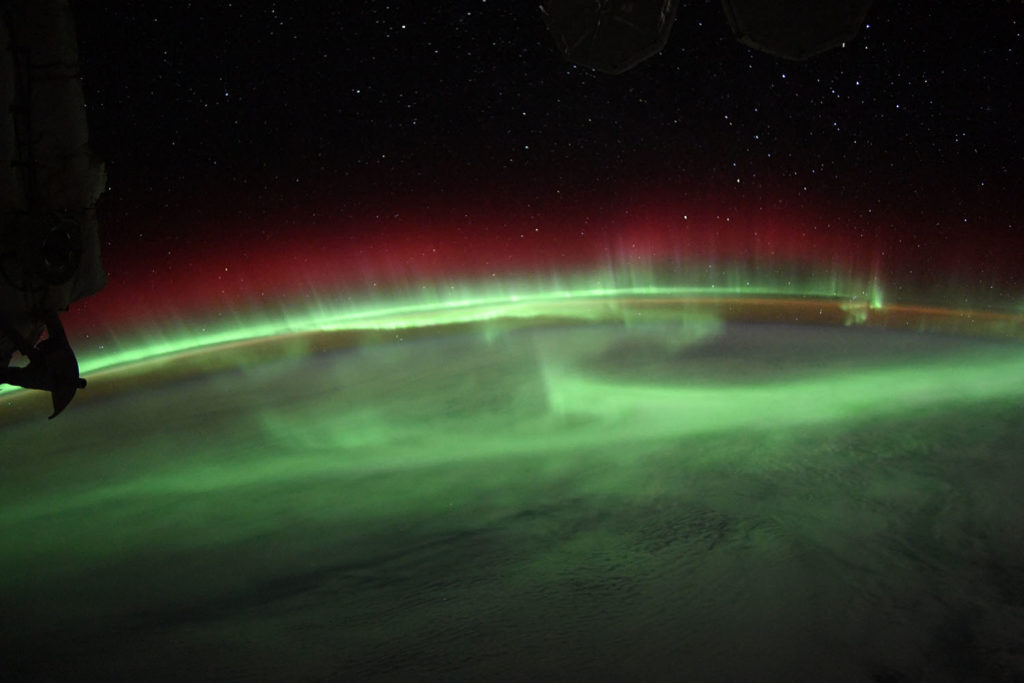A strong magnetic storm caused by two coronal mass ejections from the Sun covered the Earth on the night of 17 to 18
NASA astronaut posted on his Twitterseveral vivid photos of this phenomenon in his Twitter. “Aurora borealis is absolutely IMPRESSIVE today!!! Bob Hines wrote. “Grateful for the recent solar activity that has led to these sights.”




Aurora on the night of August 17-18. Photo: Bob Hines
Earlier this week, European Space Agency astronaut Samantha Cristoforetti shared photos of another aurora from the ISS.
 Aurora Borealis August 10th. Photo: Samantha Cristoforetti
Aurora Borealis August 10th. Photo: Samantha Cristoforetti
Recall that auroras occur when the Sunsends a stream of charged particles towards the Earth. Colliding with the upper atmosphere, they excite the atoms and molecules of the gases that make up its composition. The radiation of excited atoms is in the visible range and is observed as aurora.
The sun is very active now, so residents of northern latitudes have the opportunity to admire this bright natural phenomenon quite often.
For example, the current magnetic storm shouldlast two days, but tomorrow, according to the forecast of the Earth, a new coronal mass ejection will reach due to a paired solar flare. On August 17, a double explosion of class M1 and M2 sent a new portion of charged particles towards our planet.
Double solar flare on August 17. Video: Spaceweather.com
Read more:
The United States designed a fusion reactor. It can heat up to a billion degrees
Record coronal mass ejection at Betelgeuse is 400 billion times larger than the sun
In Australia, created a laboratory that will revive the marsupial wolf